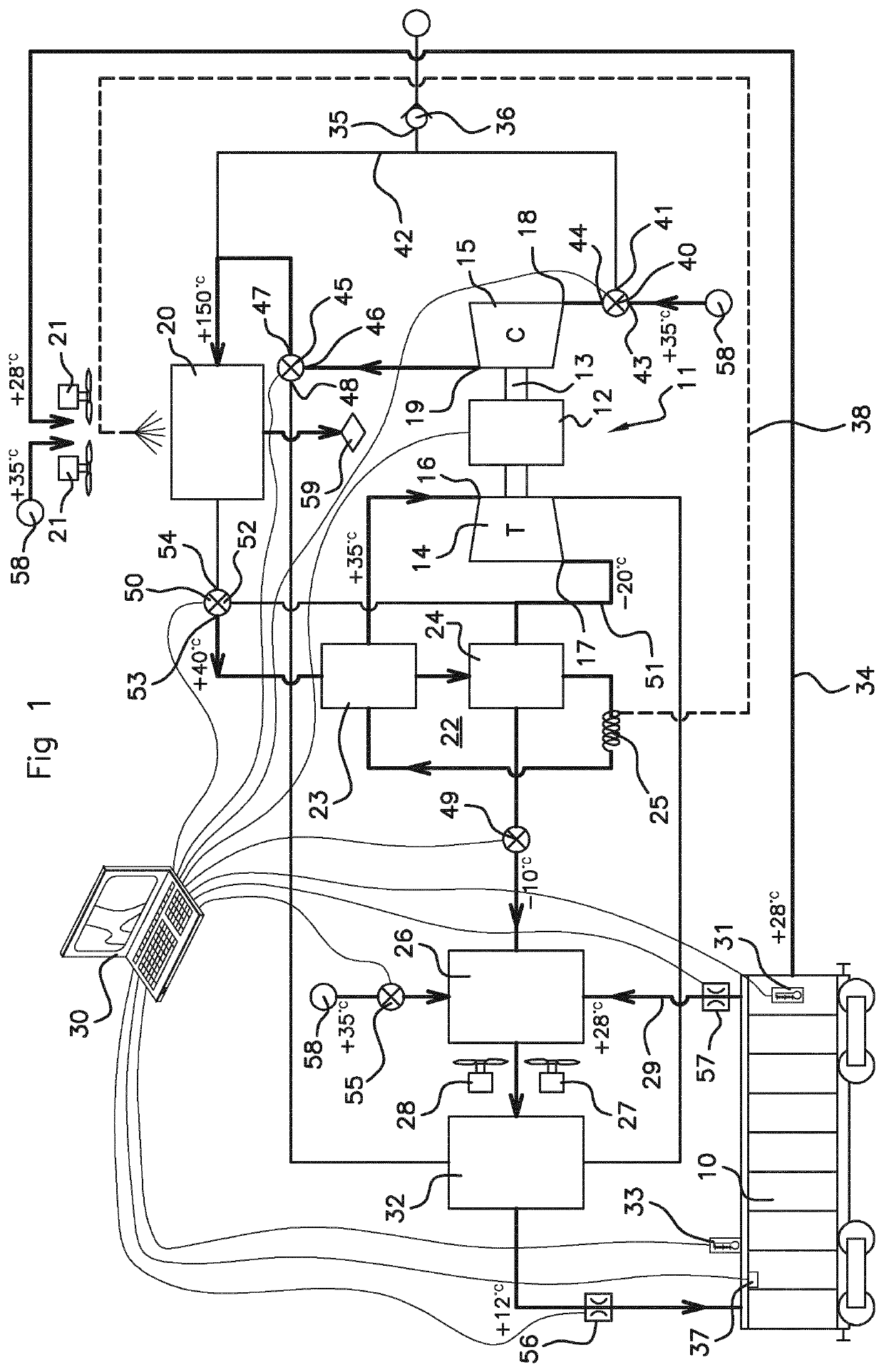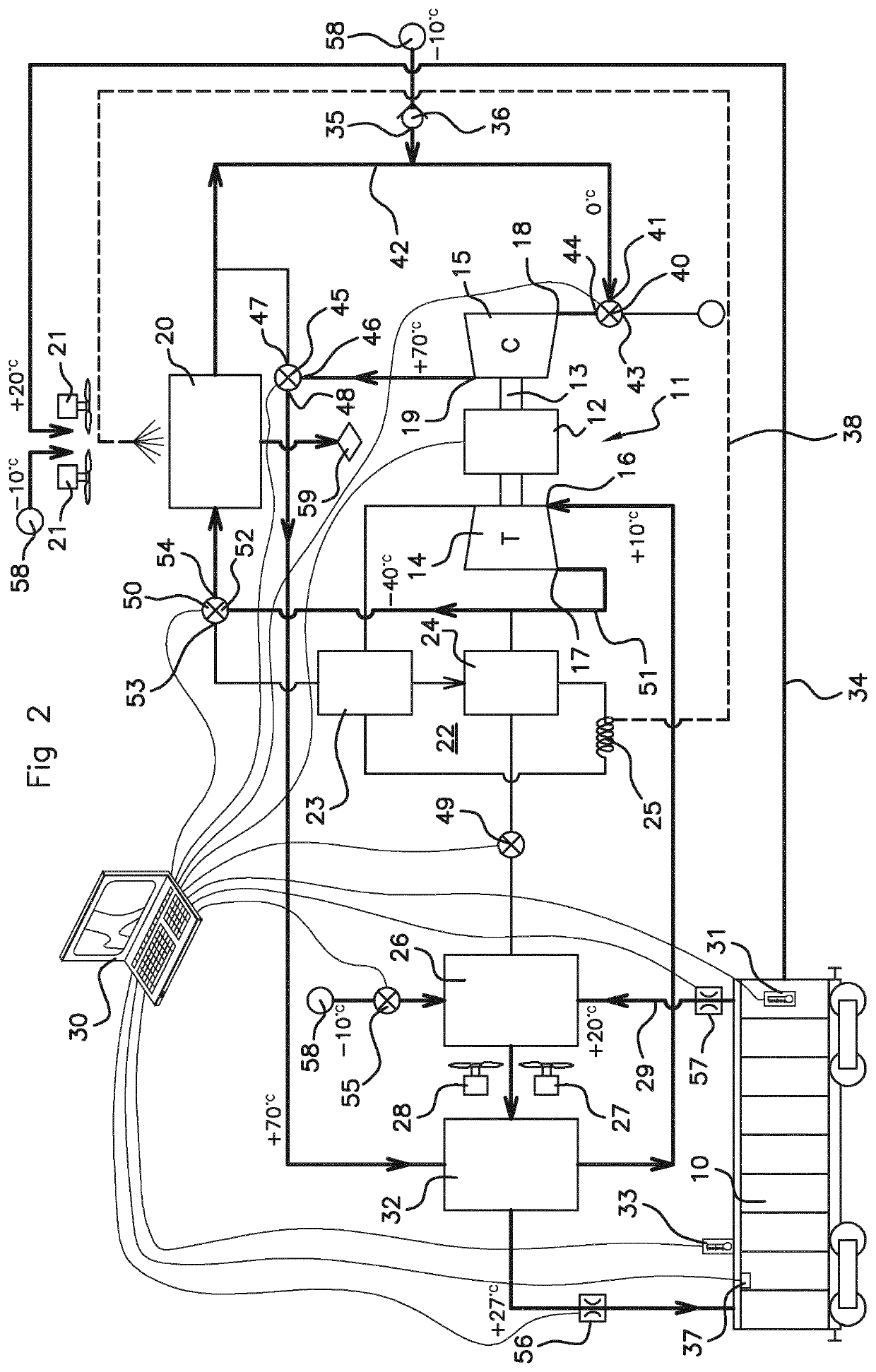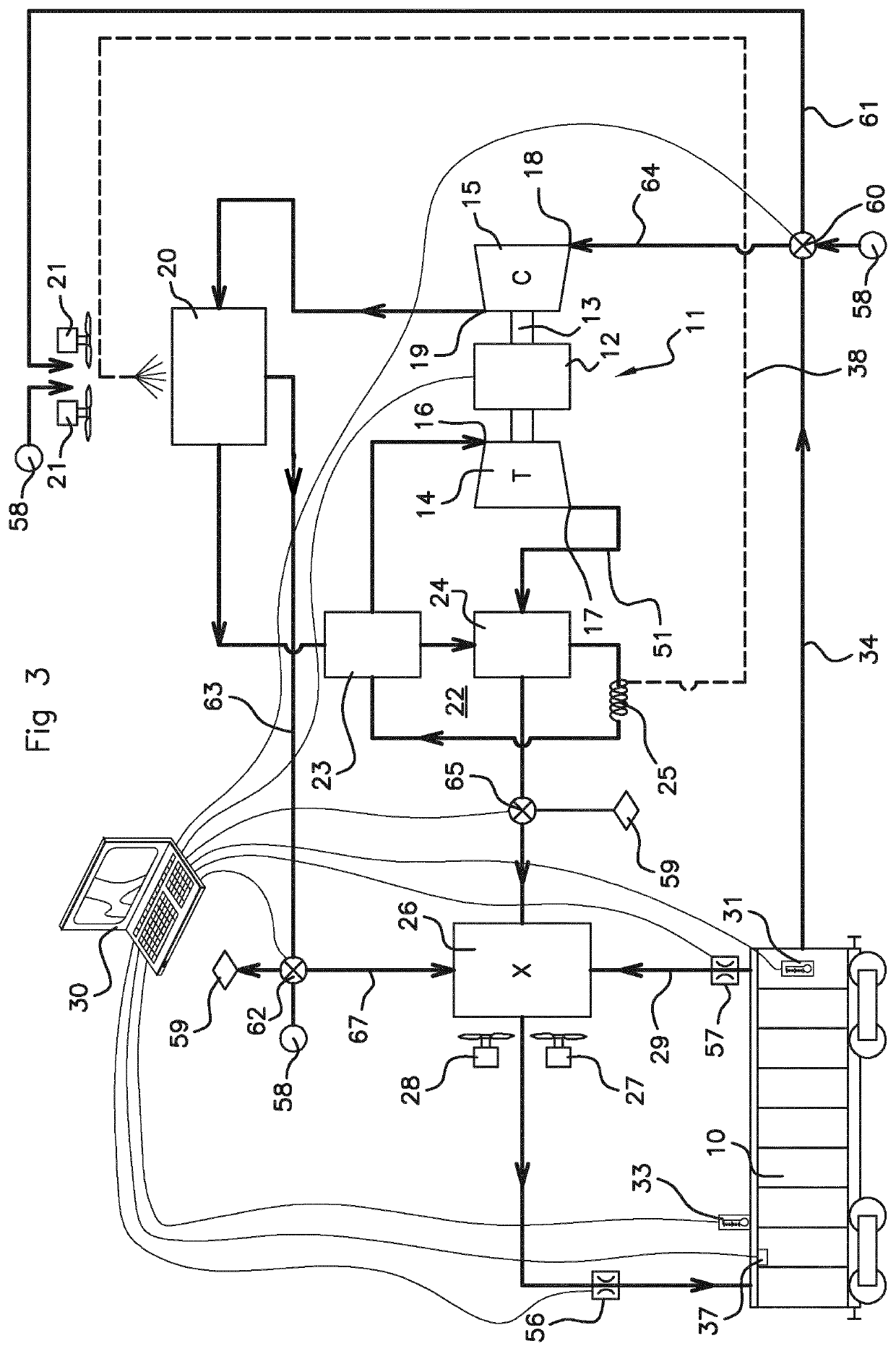Method for supplying air at a controlled temperature to a cabin of a land vehicle, and land vehicle
a technology for land vehicles and cabins, applied in vehicle heating/cooling devices, climate sustainability, air-treatment devices, etc., can solve the problems of insufficient surface operation, pump cycle operation, and rare heating, etc., to achieve easy adjustment, low energy consumption, and easy installation and maintenance.
- Summary
- Abstract
- Description
- Claims
- Application Information
AI Technical Summary
Benefits of technology
Problems solved by technology
Method used
Image
Examples
first embodiment
[0124]In the first embodiment illustrated in FIGS. 1 and 2, the air inlet 18 of the compressor 15 comprises a controlled three-way valve 40, of which one inlet 41 is connected by a conduit 42 to the first circuit of the intermediate exchanger 20, one inlet 43 is supplied with external fresh air 38, and having an outlet 44 connected to the air inlet 18 of the compressor 15.
[0125]The air outlet 19 of the compressor 15 is connected to an inlet 46 of a controlled three-way valve 45, of which one outlet 47 is connected to the conduit 42 leading to the first circuit of the intermediate exchanger 20 (conduit 42 connecting the air inlet 18 of the compressor 15 to the first circuit of the intermediate exchanger 20), and one outlet 48 is connected to the first circuit of the cabin heat exchanger 32.
[0126]A controlled valve 49 is interposed between the air outlet 17 of the turbine 14 and the mixing chamber 26, for example between the outlet of the second circuit of the condensing heat exchange...
second embodiment
[0163]Thus, in this second embodiment, in the heating mode, the main air circuit flowing in the turbocompressor 11 and an airflow ejected to the outside, which can correspond to the airflow to be extracted from the cabin 10 for renewal of dioxygen in the cabin 10, and which serves to heat the airflow supplying the mixing chamber 26 and thus the cabin owing to the intermediate exchanger 20 which acts as a heat exchanger.
[0164]It should be noted that in a variant, not shown, of this second embodiment, the air inlet 18 of the compressor 15 can be supplied directly by drawing air specifically from the cabin 10 e.g. for ejecting foul air to the outside, along a different conduit from the recirculation and heating air passing into the second circuit of the intermediate exchanger 20.
[0165]Table 3 below shows, by way of non-limiting example, different typical values for flow rate, pressure and temperature at the air inlets and outlets of the turbine 14 of the compressor 15 of the turbocompr...
PUM
 Login to View More
Login to View More Abstract
Description
Claims
Application Information
 Login to View More
Login to View More - R&D
- Intellectual Property
- Life Sciences
- Materials
- Tech Scout
- Unparalleled Data Quality
- Higher Quality Content
- 60% Fewer Hallucinations
Browse by: Latest US Patents, China's latest patents, Technical Efficacy Thesaurus, Application Domain, Technology Topic, Popular Technical Reports.
© 2025 PatSnap. All rights reserved.Legal|Privacy policy|Modern Slavery Act Transparency Statement|Sitemap|About US| Contact US: help@patsnap.com



